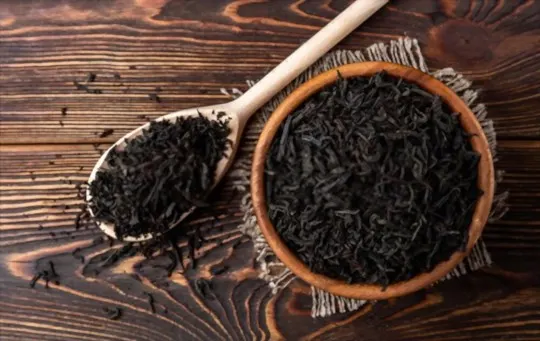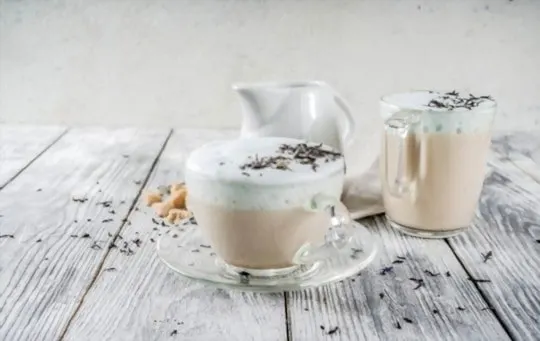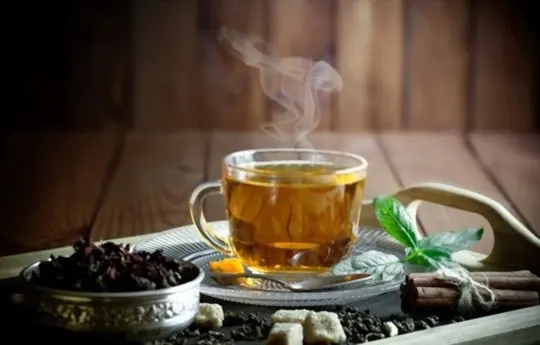Black Tea and Earl Grey. Two giants in the caffeine kingdom.
First off, we’ve got black tea. The classic. The one you reach for on groggy mornings. It’s bold, it’s strong, it’s your reliable pick-me-up.
Then there’s Earl Grey. A bit fancy, right? With that bergamot orange twist. It’s the friend you invite over when you want to impress.
We’ve all been there, standing in the tea aisle, debating. Our story? We once chose Earl Grey for a 6 a.m. meeting. Mistake. Eyes barely open, we longed for the punch of black tea.
Now, we’re laying it all out there. Each has its moment.

What is Black Tea?

Tracing back to ancient China, black tea is a type of tea made from Camellia sinensis leaves.
Its unique processing includes withering, rolling, fermentation, and drying.
Unlike green tea leaves that are unfermented, black tea leaves undergo extensive oxidation.
Due to the oxidation process, the flavor and aroma of black tea are robust, earthy, and full-bodied.
It contains more caffeine compared to other variants of tea like green, white, and herbal teas.
With its high tannin content and low acidity level, black tea is known to provide numerous potential health benefits like improving heart health and lowering stress levels.
What is Earl Grey?

Earl Grey tea is a variety of black tea that has the unique addition of bergamot oil.
This infusion gives the tea its distinctive aroma and flavour, making it a popular choice among tea lovers.
The history behind this blend is still debated, with some sources attributing it to a British nobleman while others suggest it originated in China.
Regardless of its origins, Earl Grey has become a mainstay in the world of tea.
Differences Between Black Tea and Earl Grey

When it comes to tea, choosing between black tea and Earl Grey can be a daunting task.
Both tea types are made from Camellia sinensis leaves, but they are different in their preparation, taste, and aroma.
Black tea has a robust and earthy flavor, while Earl Grey’s signature taste is imparted by bergamot oil.
Additionally, black tea can be steeped longer than Earl Grey due to its tannins content.
Earl Grey may not suit everyone’s taste buds because of its strong lavender-like aroma and citrusy taste, which comes from bergamot oil infusion.
However, it is an excellent option for those who want a sweeter yet refreshing alternative to common black teas like Lipton or Darjeeling.
Besides, Earl Grey has several health benefits as it contains antioxidants called polyphenols that help reduce the risk of heart disease.
1 – Tea Base and Varieties
The tea base and varieties used to create Black Tea and Earl Grey are significant factors when analyzing the difference between the two brews.
While both teas are made from the Camellia sinensis plant, Black Tea is created by finely chopping and fermenting its leaves, while Earl Grey is a derivative of Black Tea that has been flavored with oil from bergamot oranges.
This simple distinction provides a distinct taste difference in each tea.
Black Tea possesses a bold and rich flavor with an intense aroma due to its significant fermentation process.
On the other hand, Earl Grey boasts a unique citrusy flavor due to its addition of bergamot orange oil into the blend.
The Black Tea’s strong characteristics make it an ideal component for blends like chai or masala, whereas Earl Grey’s distinctive taste makes it perfect for sipping alone or with baked goods.
It is important to note that while the foundation of these two teas appears similar, their unique flavors stem from their varied production processes which offer various benefits making them equally enjoyable choices depending on personal preference.
2 – Flavor and Aroma
The taste and aroma of black tea and Earl Grey can vary significantly, making them two distinct options for tea enthusiasts.
Black tea has a robust flavor profile that is bold, malty, and slightly sweet.
In comparison, Earl Grey is known for its unique blend of citrusy bergamot, which gives it a complex yet refreshing flavor.
The aroma of black tea is often described as earthy or woody, while Earl Grey’s fragrance is more floral and citrusy.
When it comes to flavor and aroma, selecting between black tea and Earl Grey comes down to the individual’s preference.
For those who enjoy a full-bodied tea with hints of sweetness, black tea is an excellent option.
At the same time, others who appreciate a distinct citrusy note in their beverage can opt for Earl Grey.
Interestingly enough, the flavor profile and aroma can also vary depending on factors such as the region where the tea was grown or how it was processed.
Therefore it’s essential to try different kinds of teas to find one that fits your taste buds best.
3 – Bergamot Infusion
Earl Grey tea owes its distinct flavor to bergamot, a citrus fruit from Italy.
The oil of this fruit infuses black tea leaves with a fragrant aroma and a subtle taste that sets it apart from regular black teas.
Consuming black tea has been linked to numerous health benefits including reducing the risk of heart disease, improving gut health, and even aiding weight loss.
However, with the addition of bergamot oil, Earl Grey tea can offer additional benefits.
Studies have shown that bergamot oil contains anti-inflammatory and antioxidant properties that make it an excellent diuretic and laxative.
Additionally, it is said to have anxiety- and stress-reducing effects making it an ideal beverage for the evening or before bed.
4 – Caffeine Content
When it comes to caffeine content, Black tea and Earl Grey are both popular options.
Both types of tea contain caffeine, but in different amounts and forms.
While black tea has higher levels of caffeine than many other types of tea, Earl Grey contains bergamot oil which can affect the way caffeine is absorbed by the body.
It’s worth noting that factors such as brewing time, temperature, and quantity can also affect the amount of caffeine present in each cup of tea.
However, on average, black tea contains around 47 milligrams of caffeine per eight-ounce serving while Earl Grey contains around 35 milligrams per serving.
It’s important to understand your personal sensitivity to caffeine when deciding on a type of tea to consume.
Some people may find that they are more sensitive to caffeine than others and should choose a lower-caffeine option like Earl Grey.
Overall, both black tea and Earl Grey provide a natural energy boost from their caffeine content.
Understanding the differences between these two popular teas can help you make an informed choice based on your individual preferences and needs.
Similarities Between Black Tea and Earl Grey

Black tea and Earl Grey both come from the plant Camellia sinensis, which means they share some similarities.
Both teas are rich in antioxidants, caffeine, and other nutrients that offer numerous health benefits.
They also have similar brewing methods and can be enjoyed with or without milk and sweeteners.
However, where they differ is in their taste and aroma.
While black tea has a robust, earthy flavor that is distinctly different from green or white teas, Earl Grey stands out for its unique blend of citrusy bergamot oil that gives it a distinct floral flavor.
Additionally, consumers who prefer strong brews often opt for black tea while those who prefer mild flavors tend to go for Earl Grey.
In summary, Black Tea and Earl Grey share several similarities as both are variations of the tea plant Camellia sinensis with comparable nutritional values.
However, what sets them apart is their distinct taste and aroma profile that appeals to different types of consumers.
Health Benefits and Uses of Black Tea and Earl Grey
Black Tea and Earl Grey are both popular tea options with unique health benefits.
Here are some reasons why these teas are an excellent choice for your well-being.
- Both Black tea and Earl Grey contain antioxidants that help protect your body from damage caused by free radicals.
- Drinking black tea has been linked to improved heart health, lower cholesterol levels, and decreased blood pressure.
- Earl Grey contains bergamot oil which is believed to have anti-inflammatory properties, making it a good option for those suffering from inflammation-related conditions such as arthritis or digestive issues.
- The caffeine in black tea and Earl Grey can help improve focus, mental clarity, and alertness.
- Black tea has been shown to reduce the risk of stroke and lower the risk of developing certain types of cancer.
- Earl Grey may also help improve digestion thanks to the presence of tannins and flavonoids. As a result, it is often recommended for those suffering from digestive issues such as constipation or bloating.
In addition to these benefits, both teas offer unique flavors and aromas that make them an enjoyable beverage choice.
However, it’s important to remember that moderation is key when it comes to consuming any caffeinated beverage.
It’s also important to consider potential drawbacks such as increased anxiety or disrupted sleep patterns for those who are sensitive to caffeine.
How to Prepare Black Tea and Earl Grey?
When it comes to preparing tea, there are a few vital steps that must be followed to derive maximum benefits and taste.
To make the perfect cup of black tea or Earl Grey, follow these simple instructions:
- Boil water in a kettle or saucepan.
- Place the required amount of black tea leaves or Earl Grey tea bag in a teapot.
- Pour hot water over the tea leaves or bag and allow it to steep for 3-4 minutes.
- Strain your tea into a cup and enjoy.
Apart from the regular brewing method, you can also add milk and sugar as per your preference and taste.
It is crucial to remember that each variety of tea has its unique qualities, including flavor, aroma, caffeine content, antioxidants levels and health benefits.
Black Tea is bolder and richer in taste while Earl Grey has added bergamot oil which provides citrusy flavour notes.
Popular Brands of Black Tea and Earl Grey
Black tea and Earl Grey are both popular tea options.
There is a wide selection of black teas available from all around the world, including Darjeeling, English Breakfast, and Ceylon.
Each type has its unique flavor profile.
Similarly, Earl Grey is a type of black tea with added bergamot oil, giving it a distinct aroma and taste.
Some popular brands of black tea include Twinings, Harney & Sons, Tata Tea, and Bigelow.
The popular brands of Earl Grey are Ahmad Tea, Harney & Sons, Taylors of Harrogate, and Twinings.
These brands maintain high-quality standards to ensure customer satisfaction.
Conclusion
Comparing black tea and Earl Grey, both have their unique taste and health benefits.
While black tea is robust and versatile, Earl Grey has a distinct floral aroma due to the addition of bergamot oil.
However, choosing between the two depends on personal preference and health goals.
For instance, black tea is said to reduce the risk of heart disease and diabetes while Earl Grey may boost digestion and improve mood.
Ultimately, it’s advisable to moderate caffeine intake and consume either in moderation.

Leave a comment